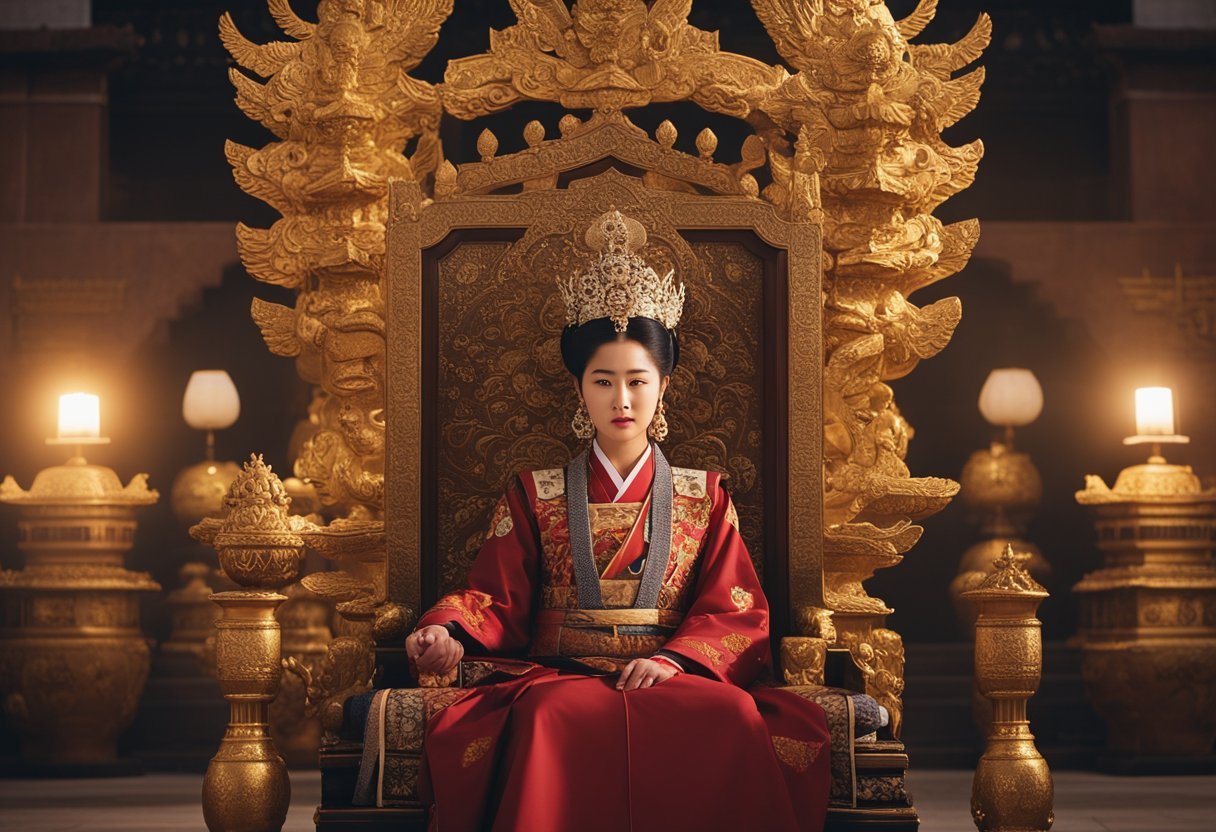Queen Seondeok, the first female ruler of Silla, one of Korea’s Three Kingdoms, fascinates history enthusiasts with her remarkable reign from 632 to 647. She broke gender barriers and led her kingdom through a period of significant political and cultural change. Her leadership coincided with Silla’s progress toward unifying the Korean peninsula and saw the flourishing of Buddhism, which marked a pivotal era in Korean history.
Silla, under Queen Seondeok’s rule, not only maintained its sovereignty against rival kingdoms but also laid the groundwork for eventual unification. Her strategic and diplomatic acumen, combined with her patronage of Buddhism, earned her a legacy that endures in Korean culture and history. The story of Queen Seondeok’s reign offers rich insights into the roles women played in ancient Korea and the complex dynamics of power and religion during her time.
Intrigued by the challenges and triumphs of Queen Seondeok’s rule? Her tale is not only a testament to her leadership but also a captivating chapter in the annals of Korean history. Dive deeper to discover how this pioneering queen shaped the destiny of her kingdom and left an indelible mark on Korean heritage.

Early Life and Ascension to the Throne
Queen Seondeok’s journey to the throne was marked by her royal lineage, education, and numerous challenges. She leveraged her background and wit to navigate a male-dominated society.
Birth and Royal Heritage
Queen Seondeok was born around 610 AD into the royal family of Silla, one of Korea’s Three Kingdoms. Her father, King Jinpyeong, positioned her uniquely in the line of succession due to his lack of male heirs. This royal lineage made her a significant figure early on.
Being part of the royal household, she was exposed to the intricacies of governance. Her family background instilled in her a sense of duty and leadership, laying the groundwork for her future reign.
Education and Path to Power
Education played a vital role in Queen Seondeok’s development. She received an extensive education in literature, politics, and Buddhism. This educational foundation enabled her to be an insightful and strategic leader.
Seondeok’s intelligence and capability caught the attention of her father. He involved her more in state affairs, giving her the experience and visibility needed to take the throne. Her ascension was also influenced by her diplomatic skills and her ability to build alliances, which were crucial in a male-dominated society.
Challenges to Her Rule
Despite her royal heritage and education, Seondeok faced opposition. Traditionalists and rival factions questioned a female ruler’s legitimacy. Her male cousins and other nobles saw her as a threat and often conspired against her.
One of the notable challenges was her conflict with the aristocracy. Some nobles resisted her progressive policies, including the promotion of Buddhism. Additionally, external threats, particularly from the neighboring kingdoms of Baekje and Goguryeo, tested her rule.
Despite these challenges, Queen Seondeok’s resilience and wisdom allowed her to maintain her position and subsequently lead Silla towards greater unity and prosperity.
Reign and Legacy

Queen Seondeok’s reign is notable for her cultural achievements, political and military leadership, and the impact she had on Korean history. Her contributions to Buddhism, architectural innovation, and governance left a lasting legacy.
Cultural Achievements and Buddhism
Queen Seondeok is celebrated for her dedication to promoting Buddhism. Under her rule, numerous temples were constructed, including the famous Bunhwangsa.
She also supported the creation of the Nine-Story Wooden Pagoda at Hwangnyongsa Temple, reflecting her commitment to both religious and cultural development. Her reign saw an increase in Buddhist art and literature, spreading the religion’s influence throughout the kingdom.
Political and Military Leadership
Seondeok showcased a strong political acumen by skillfully managing internal and external challenges. She navigated the complexities of Silla’s relations with its neighbors, Baekje and Goguryeo.
Her strategic alliances and military campaigns played a crucial role in defending Silla from invasions. She also strengthened ties with the Tang Dynasty in China, which helped secure support against rival kingdoms.
Queen Seondeok’s Death and Succession
Queen Seondeok passed away on February 20, 647. Her death marked a significant moment in Silla’s history, as she was the first female monarch to rule.
She was succeeded by Queen Jindeok, another female ruler, indicating a continuation of her legacy and the acceptance of female leadership in Silla. Her passing was mourned deeply, and she was honored with a grand funeral befitting her status.
Impact on Korean History
Queen Seondeok’s reign significantly influenced Korean history. Her leadership set a precedent for future female rulers, showcasing that women could also effectively govern.
Her cultural and religious contributions enriched Silla, paving the way for advancements during her successors’ reigns. Her diplomatic efforts strengthened Silla’s position, leading to its eventual unification of the Korean Peninsula.

